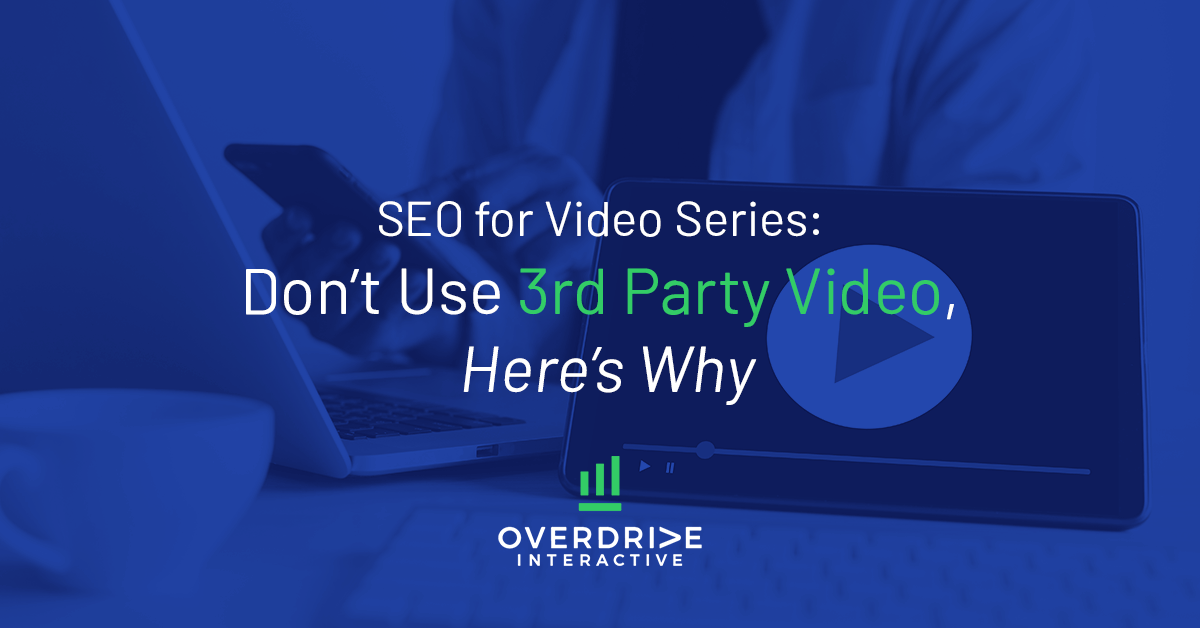
Overdrive Interactive takes pride in the fact that our team is made up of digital marketing experts. With that, we have an opportunity to share the knowledge of our experts with those who may be seeking to educate themselves or find ways to improve their own digital initiatives. We are excited to announce the launch of a new video series focused on SEO tactics for videos. Throughout the series, we will cover how to increase views, optimize the content and quality of videos, and much more!
When creating video content, initial focus and manpower are directed toward producing the highest quality video possible. Ensuring that your video is captivating, properly portrays your desired message, and is visually appealing should be the first main points of concentration. While those factors are important, where you share that video is often overlooked and is of equal value. In this video, we’ll explain the best tactics for where to upload or host your video.
Why YouTube is King
Generally, there are three options for where your video content can live; 3rd party sites, YouTube, or your website/blog. While YouTube is technically a third-party site, it stands out in several key ways. First, YouTube has a free model for both those viewing and producing videos. Other third-party sites often require payment to get access to the same tools that YouTube offers for free. Aside from the superior creative tools, because it’s a Google-owned product, creators have access to analytics that provide information about a wide range of metrics.
Other third-party hosts frequently require high bandwidth to load and view content. A big drawback is knowing that users may skip watching the video altogether because it wouldn’t load properly, if at all. Because third-party sites and apps usually don’t allow in-video advertising their revenue is generated by membership fees or display ads. Alternatively, YouTube and embedding a video into your website are both completely free.
Lastly, other third-party sites have a fraction of the users YouTube enjoys every day. Having a bigger audience means a greater number of potential people interested in the subject you’re discussing.
Making your video content successful
The success of your content is based on volume, ranking, and notoriety. Volume is the number of times your video has been searched. Ranking refers to where a video shows up in search queries, you want to be at the top for your content to be seen. Lastly, notoriety focuses on the awareness of your content and brand.
More than 5 billion videos are watched every day on YouTube. To achieve volume, ranking, and notoriety you must first get your video to rank high on this video platform and in front of the people interested in it. Sharing your video XML sitemap to Google ensures that all the necessary metadata is available when Google is searching for it. Metadata is the information that search engines read to produce a search result. Lastly, you need to embed the videos on your website. Having people viewing your video on-site indicates its value to Google.
We hope you’ve enjoyed the next installment in our SEO for Video Series – to discover more tips check out our YouTube channel. To learn more about our SEO and Video Production services visit: https://www.ovrdrv.com/services





